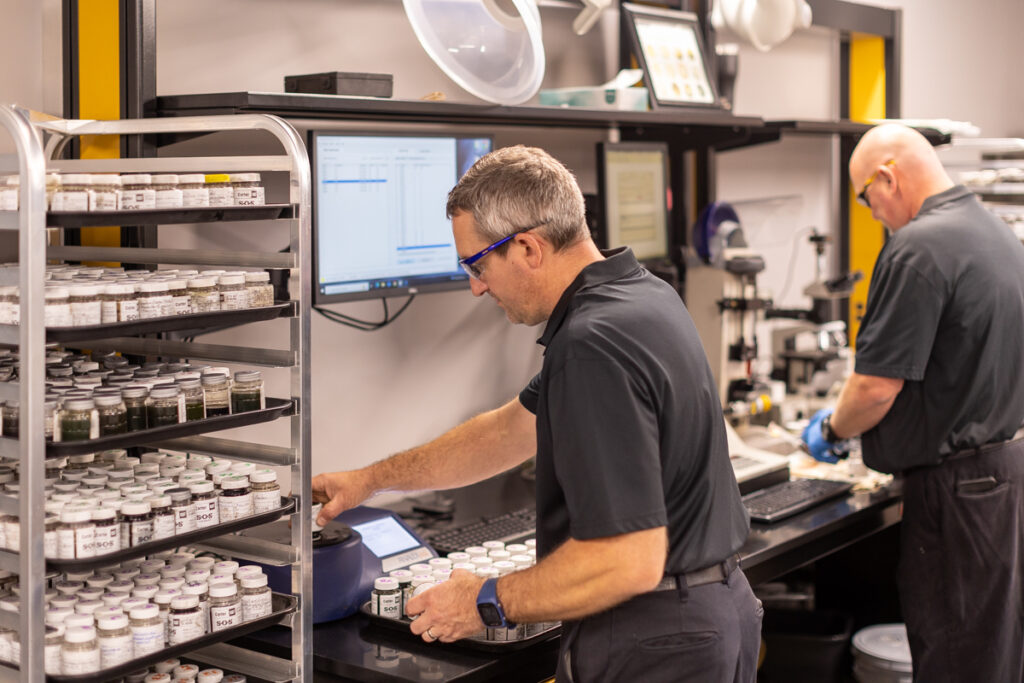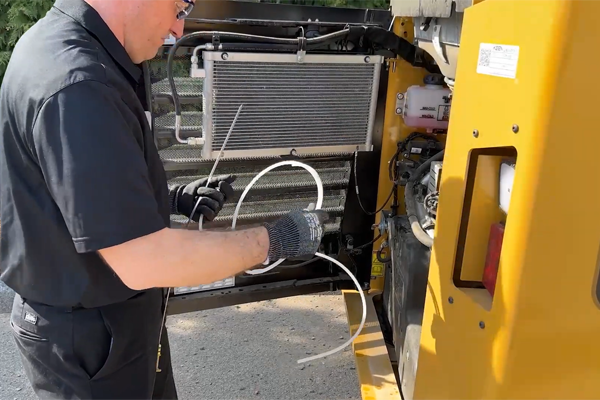Oil Analysis
Ongoing oil analysis helps you spot small problems long before they become costly repairs, giving you more productive hours and less downtime. Carter’s comprehensive oil analysis employs the latest technologies and equipment available in order to give you detailed information about your equipment’s oil condition, internal wear, and contamination levels.

OIL ANALYSIS TESTING
- Wear Metal Analysis: Monitors wear by identifying the type of wear elements and quantifying the amount of each type under 10 microns in size found in the oil sample. Oil is analyzed using a spectrometer, checking 19 key wear elements: Aluminum, Calcium, Chrome, Copper, Potassium, Lead, Sodium, Molybdenum, Iron, Magnesium, Phosphorus, Silicon, Tin, Zinc, Silver, Nickel, Boron, Titanium, and Vanadium.
- Physical Tests: We can confirm the presence of contamination by fluids including water, fuel, and antifreeze. If undetected, these contaminants can cause rapid failure.
- Viscosity: This ensures that your oil matches the recommended weight for use in your system and can identify oil transfer and fuel dilution problems. Tests are performed at 100ºC.
- Condition Analysis: Compares the lubricant properties of your used oil to that of the same oil when new to ensure optimal performance during the change period. Using an infrared scanner, we can detect contaminants including soot, oxidation, sulfation, nitration, fuel, water, and antifreeze.
- Particle Count: We determine oil cleanliness by quantifying all metallic and non-metallic particles found in the oil. A Hiac-Royco particle counter uses a laser to physically count all particles in the sample. However, this test isn’t available for use with engine or black oils. Results are reported in greater than 4 micron and 14 micron ranges, as well as ISO Cleanliness Codes
- PQ Ferrous Debris Monitor: This test measures the mass of ferrous debris (iron) and gives a quantitative number that can be trended. It allows iron debris to be detected, regardless of size, even when regular wear metal analysis does not identify it. (Performed on all samples.)
- Microscope Analysis: Used on samples, as needed, to determine what type of debris and contamination is present in the oil, regardless of size. Samples are filtered to allow all particles five microns and larger to be inspected.
Ready to start sampling?
Easily add to your cart on Parts.Cat.com by clicking one of the options below.
- Single Sample (Part #: OILSAMPLE)
- 10-Pack of Samples (Part #: SOSKIT)
- 50-Pack of Samples (Part #: BULKSOS)
How To Take An Oil Sample
